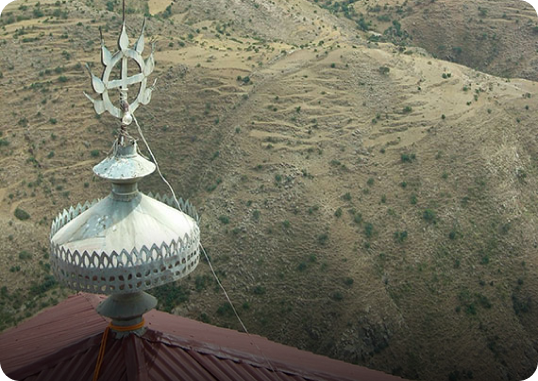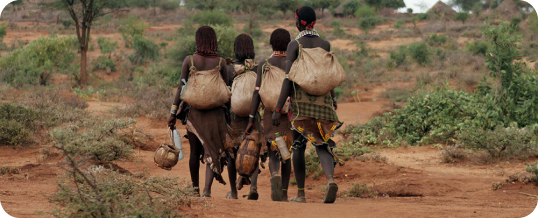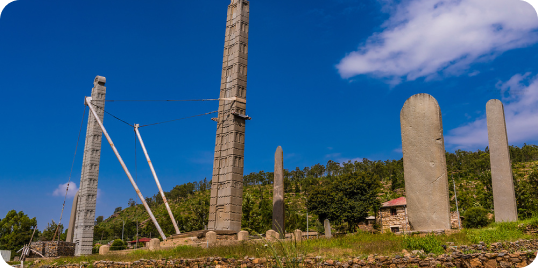About Ethiopia

Debre Damo
Debre Damo is the oldest monastery of the nation
Ethiopia is a country located in the North Eastern part of Africa in the Region of Red Sea and Gulf of Aden. It is an old nation having a long history of more than 3000 years. This is evidenced by the prevalence of centuries old monuments, buildings, churches, monasteries and mosques, which are quaint and unique.
Ethiopia is also known as being the cradle of humankind – the world’s earliest known hominid ‘Lucy’ or ‘Dinknesh’ meaning “thou art wonderful” discovered in 1974 believed to be our common ancestor. This important archeological finding combined with many other prehistoric discoveries including the Stone Age tools up to 1.7 million years old and vibrant cave paintings bears testimony to Ethiopia’s remarkable antiquity.
Ethiopia’s history is woven with fascinating facts and legends: the visit of Ethiopia’s Queen of Sheba (Makida as known locally) to Israel to meet King Solomon, the journey of the Ark of the Covenant which is now rested in Axum and the Axumite Kingdom and much more are of great interest to the discerning traveler.
Ethiopia is a country located in the North Eastern part of Africa in the Region of Red Sea and Gulf of Aden. It is an old nation having a long history of more than 3000 years. This is evidenced by the prevalence of centuries old monuments, buildings, churches, monasteries and mosques, which are quaint and unique.
Ethiopia is also known as being the cradle of humankind – the world’s earliest known hominid ‘Lucy’ or ‘Dinknesh’ meaning “thou art wonderful” discovered in 1974 believed to be our common ancestor. This important archeological finding combined with many other prehistoric discoveries including the Stone Age tools up to 1.7 million years old and vibrant cave paintings bears testimony to Ethiopia’s remarkable antiquity.
Ethiopia’s history is woven with fascinating facts and legends: the visit of Ethiopia’s Queen of Sheba (Makida as known locally) to Israel to meet King Solomon, the journey of the Ark of the Covenant which is now rested in Axum and the Axumite Kingdom and much more are of great interest to the discerning traveler.
The Country
Ethiopia has a diverse mix of ethnic and linguistic backgrounds. It is a country with more than 80 different ethnic groups each with its own language, culture, custom and tradition. One of the most significant areas of Ethiopian culture is its literature, which is represented predominantly by its ancient language Ge’ez from which modern Amharic and Tigrigna languages are derived.
To the south lies, what literally called the Omo Valley past the Rift Valley. This region is home to unique and diverse tribes which is point of attraction. Body paiting and coloration, body scarification and Art; lip-platting and hair stayles are the unusual experiences of travelers in the region by the people of the Surma, Mursi, Hamer, karo, Ari, Benna, Bume and Erbore and much more…
Omo National Park
Omo National Park, located in the south-west on the west bank of Omo River, is 870km south-west of Addis Ababa. It is one of the most beautiful national parks in Ethiopia.
our History
Ethiopia is old beyond imagination, dating to the very beginning of mankind. It is also the land of the Queen of Sheba, a place of legendary rulers, fabulous kingdoms and ancient mysteries.
Ethiopia, the oldest independent nation in Africa, has a heritage dating back to the first century AD. Traders from Greece, Rome, Persia and Egypt knew of the riches of what is now Ethiopia, and by the first century AD, Axum was the capital of a great empire. This realm became one of the first Christian lands of Africa.
Late in the 10th Century, Axum declined and a new Zagwe dynasty, centered in what is now Lalibela, ruled the land. Axum, Lalibela, Gondar, Bahir Dar and Harer now provide the greatest historical legacy.
It was in the 16th Century that the son of the great explorer Vasco Da Gama came to Ethiopia. He found a land of many kingdoms and provinces beset by feuds and war.
Axum obelisk
The Obelisk of Axum is a 1,700-year-old, 24-metres (78-foot) tall granite stele/obelisk, weighing 160 tonnes, in the city of Axum in Ethiopia.It is decorated with two false doors at the base, and decorations resembling windows on all sides. The “obelisk” ends in a semicircular top part, which used to be enclosed by metal frames.


